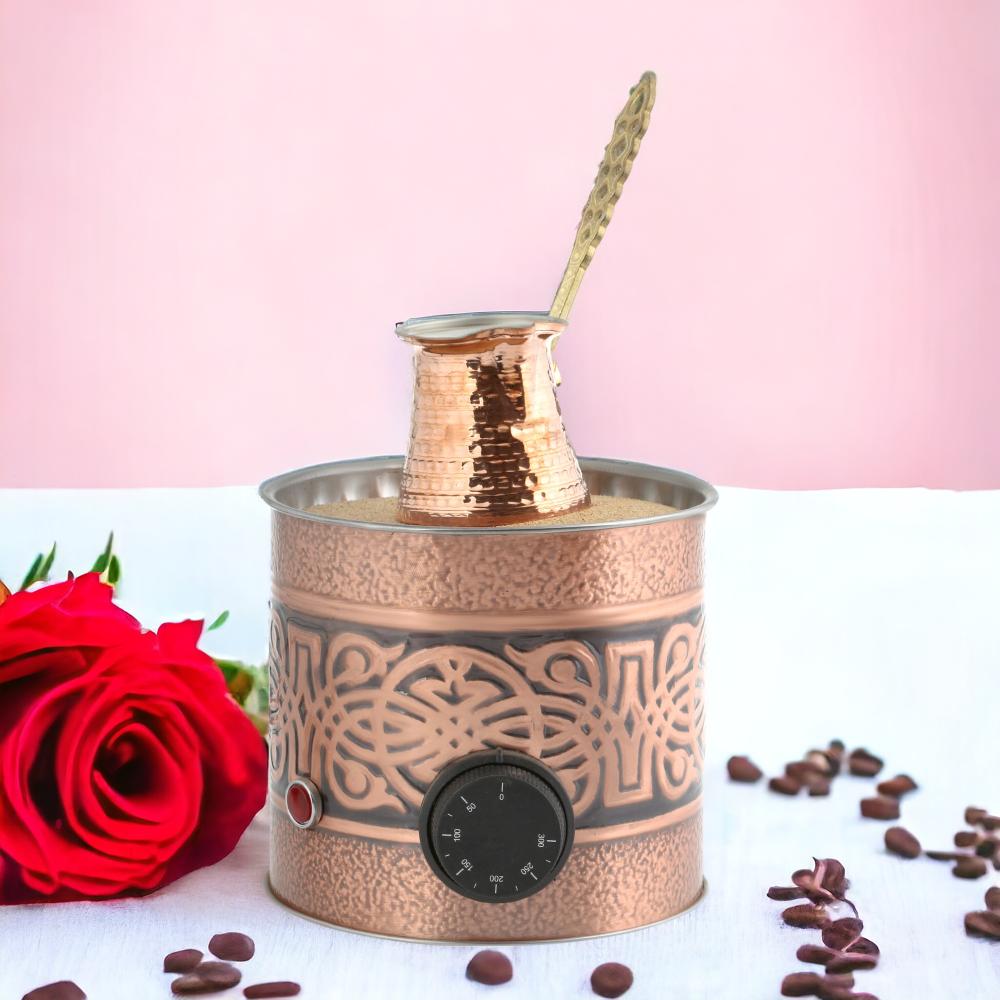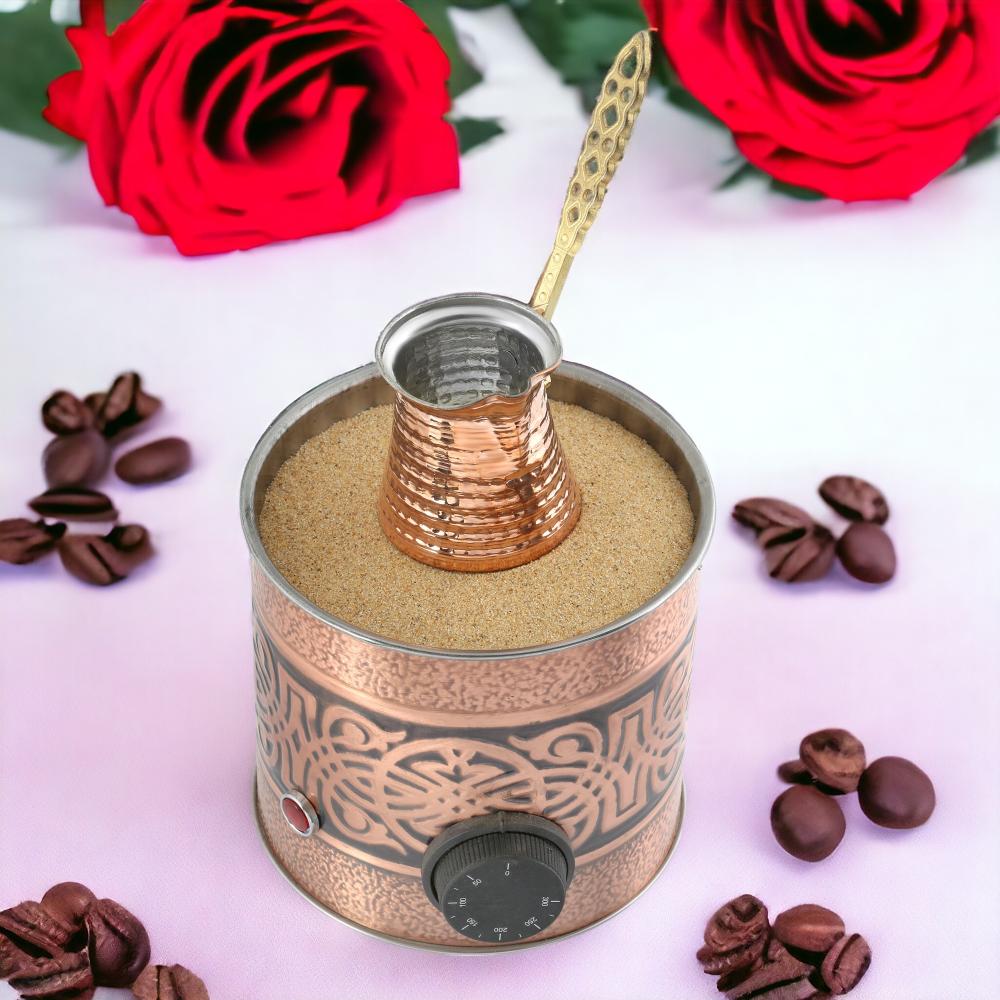Ottoman-Designed Copper Sand Coffee Maker
Brews rich and authentic Turkish and Arabic coffee, perfect in just 5 minutes.
- Voltage: Operates on 220V.
- Material: Genuine, high-quality copper.
- Usage: Suitable for making coffee, espresso, tea, Nescafé, and for use in cafes, hotels, and events.
- Features: Safe, quality copper design, and easy to clean.
Specifications:
- Type: 350W (220V), small size, suitable for home use, backyard gatherings, parties, cafes, restaurants, and events.
- Material: Copper
- Includes: Original copper coffee maker, sand, and a copper coffee pot (cezve).
- Dimensions: 16 cm x 16 cm x 16 cm (6.3 in x 6.3 in x 6.3 in)
Notes:
- Can serve two people at once depending on the size of the pot used.
- Power Plug: Compatible with Saudi Arabia’s three-pin plug - Frequency: 50 ~ 60 Hz.
- Sand can be used continuously.
- Operates on 220V.
- Adjustable thermostat from 0°C to 300°C.
- Colors may vary slightly due to lighting.
Shipping: Via SMSA or Aramex;
feel free to contact us with any questions.
Instructions:
- Place sand about 0.5 cm to 1 cm above the heating plate (black dish).
- Add water and Turkish coffee to the pot without stirring to create foam; set the device to 200°C and adjust as needed.
- Mix the sand in the machine by moving hot sand from the center to the sides and bringing cooler sand to the center (over the hot plate).
- Set the indicator to 200-220°C; once the water starts boiling, lower the indicator to 50-70°C and pour the foam that forms on the pot's surface into cups.
- Stir the remaining coffee in the pot with a spoon for about half a minute and pour into the cups.
- Enjoy your Turkish coffee.
A Short Story About Coffee
According to one legend, the invigorating effect of coffee beans was first discovered by an Ethiopian goat herder named Kaldi, who noticed that his goats became more energetic after eating small red berries. He told nearby monks, who discovered that by roasting the beans, they could make a delicious drink. Another story claims that a Persian physician named Al-Razi was the first to use coffee ("qahwa") as a stimulating medicine and mentioned it in his work The Continents. Coffee was first cultivated in Yemen on terraced farmlands. The habit of drinking coffee spread through Muslim pilgrims to Mecca and Medina and then across the Middle East. Later, coffee cultivation appeared in Arab countries and Egypt, where drinking coffee (or qahwa) quickly became a daily habit.
In the 16th century, travelers and botanists visiting the Middle East sent word to Europe about an unknown plant and the drink made from its fruit. Merchants quickly recognized the potential of the new drink, and the first bags of coffee beans reached Venice in the early 17th century. This was the moment when Europeans began learning about coffee. News of coffee reaching Venice spread rapidly, and soon Dutch traders also showed interest in coffee cultivation and trade. Thanks to European travelers and monks, coffee made its way across the world and quickly became highly popular.


